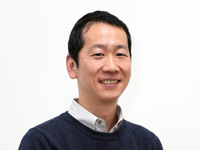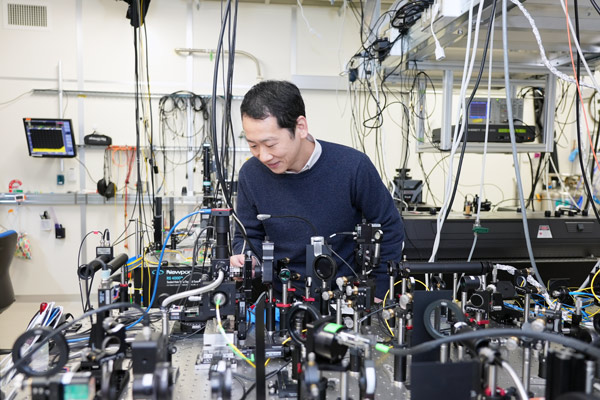Mar. 25, 2022
Foundational structures, from nano to human
Yuichiro Kato, Chief Scientist / Team Leader

Please describe your role at RIKEN.
I am the chief scientist for the Nanoscale Quantum Photonics Laboratory at the RIKEN Cluster for Pioneering Research and a team leader for the Quantum Optoelectronics Research Team at the RIKEN Center for Advanced Photonics.
Please describe your research.
We are working to build the foundations of atomically defined technology. We believe this will enable devices that make use of quantum effects at room temperature to process and transmit information with extremely high efficiency. Typical experiments involve integration of individual nanomaterials into device structures and testing using automated microspectroscopy systems.
More specifically, my group studies the quantum properties of nanomaterials and the quantum physics of nanoscale photonic devices. At the moment, the nanomaterials of interest are carbon nanotubes and layered two-dimensional materials, while devices of interest include photonic crystal cavities and electrostatically formed diodes. My research covers quantum phenomena within these systems, such as photon antibunching and the Purcell effect.

What excites you most currently?
By using automated microspectroscopy, we can identify carbon nanotubes with precise atomic arrangements. Recently, we developed a method to pick up and place the tubes on device structures, which means that we are now able to choose atomically defined nanomaterials and assemble them. Although we are still very far away from fabricating arbitrary structures with atomic precision, we are making exciting steps toward devices that utilize atomically defined components.
How has being at RIKEN helped your research?
RIKEN is different to other universities in Japan, as I’m able to hire postdocs from various fields such as physics, chemistry, materials engineering, mechanical engineering and electrical engineering. Building an interdisciplinary group is important in nanoscience, as we use both top-down and bottom-up techniques.
What is the best thing about working at RIKEN?
It’s great to be able to work with the best scientists from different fields. I have served as the chair for the RIKEN Scientists’ Assembly (RSA), which works to enhance interdisciplinary interactions within RIKEN. My aim was for its membership to encompass all of RIKEN. For historic reasons many research centers were not part of the RSA, but after I visited many center directors, all have joined.
What was your most memorable RIKEN experience?
I’ll never forget how helpful the administrative support was when I started my lab. I had to go back and forth between RIKEN and The University of Tokyo to design the lab and plan my move. They supported me by making schedules for the construction and moving processes, and by arranging meetings with the facilities people. The RIKEN office got quotes from the contractors to help expedite the process. They also guided me through all the necessary administrative processes for bringing students in, moving equipment and transferring funds. Everything went so smoothly, and it was a major change from being at a university where administrative support for research was minimal.
